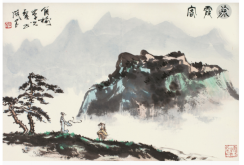
The world is vast and full of uncertainties. For people who have endless curiosity and an adventurous spirit, traveling is no doubt one of the best ways to explore the great unknown. There are many world-famous travelers in history and their travel stories have inspired generations of travelers and will continue to do so in the future.
Born in East China’s Jiangsu province, Xu Xiake was a Chinese geologist and travel writer during the Ming dynasty (1368–1644). He traveled throughout China for more than 30 years, documenting his journeys. The Travel Diaries of Xu Xiake, his travel journal compiled by later generations, has proven to be of great scientific and literary value. Today, many of the places reviewed by Xu on his route have become popular tourist attractions.
Christopher Columbus was an Italian explorer and navigator who carried out four voyages across the Atlantic Ocean between 1492 and 1504, paving the way for widespread European exploration. His journey, funded by Spain, was the first European contact with the Caribbean, Central America and South America.
The legendary Italian explorer Marco Polo started his adventure when he was 17 years old and traveled through Asia along the Silk Road between 1271 and 1295. Luckily he was a talented writer too, and his travel experiences were vividly recorded in the book, The Travels of Marco Polo, which provided Europeans with fascinating insights into the social and cultural fabric of the Eastern world. Readers can get a comprehensive look at China, Persia, India, Japan and Asian cities.
Li Bai was a Chinese poet in the Tang dynasty (618-907). His fame continues to the present, not only as a poet but also as a romantic literary figure. He led a wandering lifestyle around China and was a great traveler; of the over 1,000 poems he left, nearly half are related to travel, such as Hard is the Road to Shu. His travel experience is vividly reflected in his nature poems. Li Bai was even praised as one of the early travel writers in China and his contributions are of great value to China’s tourism culture.
原创编写 版权所有 侵权必究! 每日更新 个性化阅读 英语飙升!
1.What’s common between Xu Xiake and Li Bai according to the text?
A They came from East China.
B They lived a wandering life.
C They travelled throughout China.
D They recorded the details of their trips.
解析:选C。C细节理解题。根据第二段中的“traveled throughout China”和最后一段中的“led a wandering lifestyle around China”可知,徐霞客和李白都曾游历全中国。故选C。
2.What is special about Columbus?
A He was from Italy.
B He went on a voyage.
C He was brave and adventurous.
D He sailed across the Atlantic Ocean.
解析:选D。D细节理解题。根据第三段中的“carried out four voyages across the Atlantic Ocean”可知哥伦布曾横渡大西洋。根据第四段可知,马可·波罗也是意大利人,曾沿着丝绸之路到达亚洲(常识:返程为海上丝绸之路)。故选D。
3.Readers can learn about India from ________.
A The Travel Diaries of Xu Xiake
B Hard is the Road to Shu
C The Travels of Marco Polo
D Journey to the West
解析:选C。C细节理解题。根据第四段内容,尤其是“Readers can get a comprehensive look at China, Persia, India, Japan and Asian cities.”可知,《马可·波罗游记》记录了中国、波斯、印度、日本和很多亚洲城市的情况,故读者可以从中了解到印度。故选C。
4.What’s the best title for the text?
A Inspiring travel stories worldwide.
B Noted travelers around the world.
C Famous destinations to remember.
D Discovering the world on foot.
解析:选B。B主旨大意题。根据第一段中的“There are many world-famous travelers in history and their travel stories have inspired generations of travelers and will continue to do so in the future.”以及后文提及的四位著名旅行家可知,本文主要就是介绍这几位旅行家。故选B。
